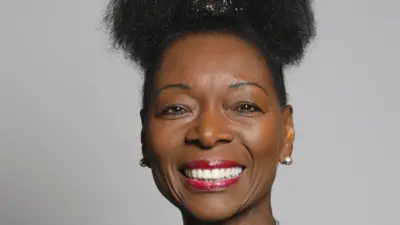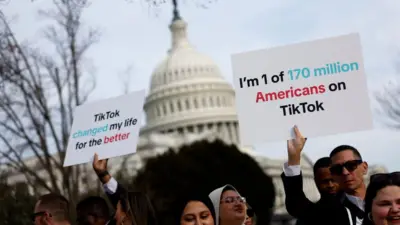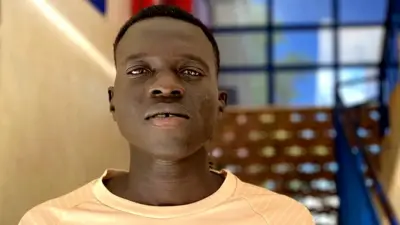We've updated our Privacy and Cookies Policy
We've made some important changes to our Privacy and Cookies Policy and we want you to know what this means for you and your data.
Armenia Azerbaijan: Reports of fresh shelling dent ceasefire hopes
Image source, Reuters
Renewed fighting in and around Nagorno-Karabakh has shattered a ceasefire between Armenia and Azerbaijan.
Officials in the disputed region report clashes in Hadrut, despite a Russian-brokered truce agreed on Saturday.
The enclave is internationally recognised as part of Azerbaijan but is controlled by ethnic Armenians.
Reports say nearly 500 people, including more than 60 civilians, have been killed in renewed fighting which escalated last month.
Armenia and Azerbaijan fought a six-year war over Nagorno-Karabakh, which ended in 1994 with a ceasefire but no peace treaty.
The recent fighting has also spread outside the disputed region. Azerbaijan reported on Saturday that a missile struck homes in the city of Ganja, killing seven people.
Dozens more were injured in the Ganja apartment blocks hit early, soon after the ceasefire brokered by Russia took effect. Armenia denied responsibility for the destruction there.
The BBC's Orla Guerin visited the scene in Azerbaijan's second-largest city and found no evidence of any military target there. The city lies just north of Nagorno-Karabakh.
Later blasts hit Stepanakert, the main city in Nagorno-Karabakh, say eyewitnesses and Armenian media.
On Monday the heaviest fighting appeared to be around Hadrut, just south of Stepanakert. But shelling was also reported in other areas.
EU foreign policy chief Josep Borrell said the "reports of continued military activities, including against civilian targets, as well as civilian casualties" despite the agreement was noted "with extreme concern", according to a statement released on Sunday.
About 70,000 people have been displaced in the latest escalation, officials say. The long-running conflict has simmered ever since the war in the 1990s, when ethnic Armenians - the majority in the territory - broke away from Azerbaijan. Thousands of Azeris were expelled then.
The now-fragile ceasefire was to allow the two countries to exchange prisoners and recover bodies from the recent bout of fighting.
The International Committee of the Red Cross (ICRC) says it will not supervise that operation until the safety of its teams is guaranteed.
Armenia is consulting the Russian government again in Moscow, apparently seeking to salvage the ceasefire.
Meanwhile US celebrity Kim Kardashian West, who is of Armenian heritage, announced on social media that she was donating $1m (£770,000) to a fund for Armenian victims of the conflict.
How did the ceasefire come about?
It was agreed after 10 hours of talks in Moscow. Russian Foreign Minister Sergei Lavrov said the two countries would now begin "substantive" talks.
However, Armenian Foreign Minister Zohrab Mnatsakanyan later described the talks as "rather difficult" and said Armenia wanted Nagorno-Karabakh to be recognised internationally as an independent state.
Self-declared Karabakh officials echoed this call and accused Azerbaijan of using ceasefire talks as cover to prepare fresh attacks.
Meanwhile, Azeri Foreign Minister Jeyhun Bayramov said not enough pressure had been put on Armenia during the talks and the situation in Nagorno-Karabakh could not remain as it was.
Azerbaijan expected to take control of more territory and the ceasefire would last only as long as it took for the ICRC to arrange for bodies to be exchanged, he said.
Turkey, which backs Azerbaijan, said the truce was Armenia's "last chance" to withdraw forces from the disputed territory.
Image source, EPA
Russia has a military base in Armenia and both are members of the Collective Security Treaty Organization (CSTO) alliance.
However, Moscow also has good relations with Azerbaijan.
What happened after the ceasefire came into force?
Armenia's defence ministry said Azeri forces had launched an attack five minutes after the truce had been due to come into effect, with ethnic Armenian forces responding. Azeri forces were also bombarding a town, the defence ministry said.
Meanwhile Azerbaijan's defence ministry said Armenia was "blatantly violating the ceasefire regime" and firing into the Azeri regions of Terter and Agdam. Armenia denied this.
On Thursday, Armenia accused Azerbaijan of deliberately shelling a historic cathedral in Nagorno-Karabakh. Pictures showed serious damage at the Holy Saviour Cathedral in Shusha city (known as Shushi in Armenian).
At the same time, Azerbaijan said Ganja and the region of Goranboy had been shelled by Armenian forces, with at least one civilian killed.
Speaking to the BBC earlier this week, Armenian Prime Minister Nikol Pashinyan warned of a "genocide" in the region, and said it was "Armenia, land of Armenians".
Stepanakert has suffered several days of shelling with residents sheltering in basements and much of the city left without power.
Top Stories
Features & Analysis
Most read
Content is not available








